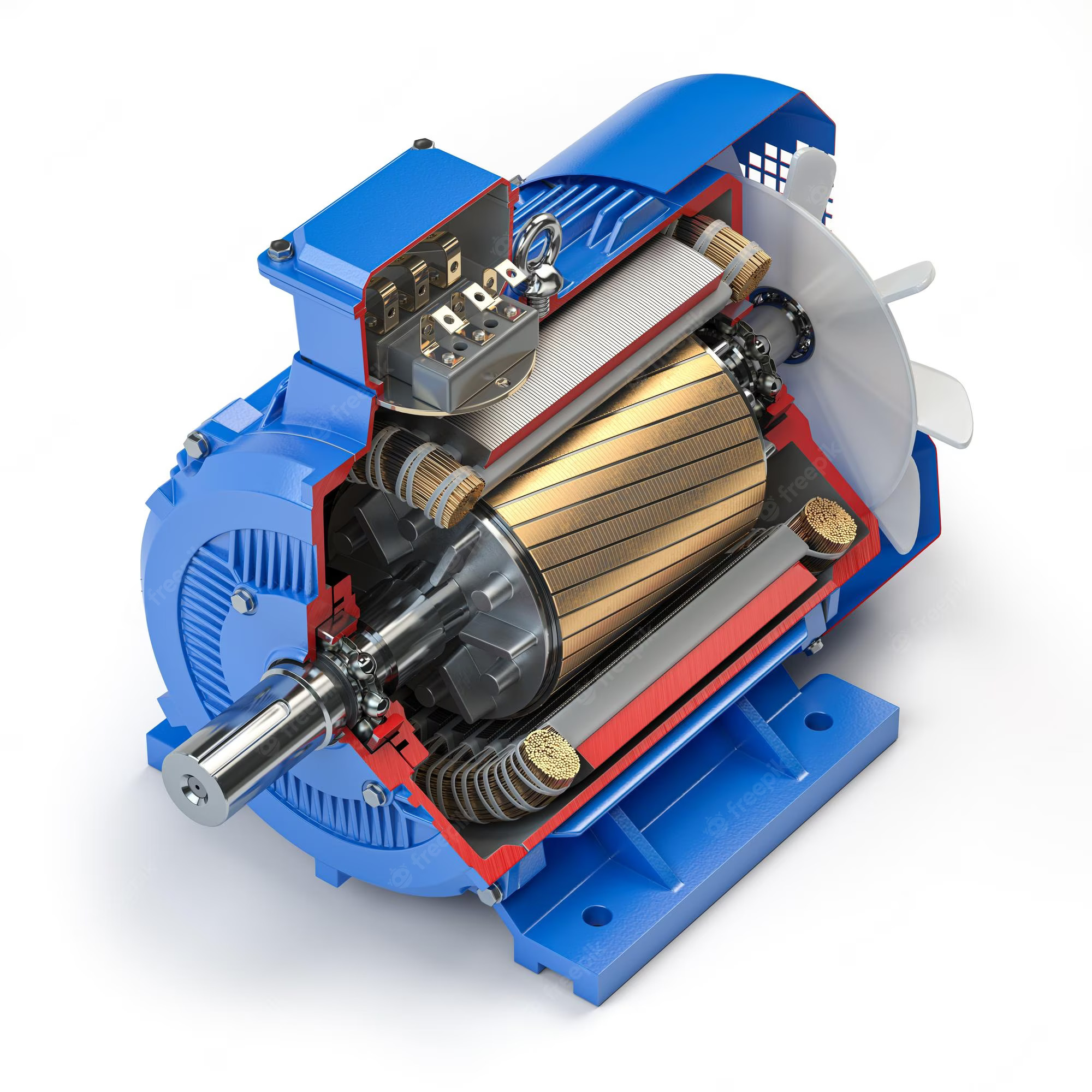Types of Electric Motors
As technology rapidly advances, electric motors have become more versatile and adaptable than ever. Selecting the appropriate motor for a motion control system is a critical decision. Your choice will directly impact the system’s overall performance and efficiency. The good news is that there is a motor design suitable for any conceivable purpose. In this comprehensive guide, we will explore various types of electric motors that power motion control systems around the world.
A Brief Overview of Electric Motors
Electric motors are the heart of any motion control system, converting electrical energy into mechanical energy to generate motion. They are used in a wide variety of applications, from industrial automation to consumer electronics. The right motor for your project will depend on various factors such as power requirements, desired speed, torque, and efficiency.
AC Brushless Motors: A Popular Choice for Motion Control
Alternating current (AC) brushless motors are among the most widely used electric motors for motion control applications. They rely on permanent electromagnets and a rotating magnetic field generated in the stator, which turns both the stator and rotor at a synchronous rate. These motors offer numerous advantages, including high efficiency, low maintenance, and longer lifespans than their brushed counterparts.
Key Features of AC Brushless Motors
- Permanent electromagnets for operation
- Induction of a rotating magnetic field
- Synchronous rotation of stator and rotor
- High efficiency and low maintenance
DC Brushed Motors: The Classic Choice
Direct current (DC) brushed motors are another popular option for motion control systems. These motors rely on brushes and a commutator to determine the current flow, which in turn influences the rotor’s movement. While they may not be as efficient as brushless motors, their simplicity and affordability make them a viable choice for many applications.
Main Components of DC Brushed Motors
- Brushes on the stator to control current flow
- Commutator for current flow regulation
- Rotor movement influenced by brush orientation
DC Brushless Motors: Compact and High-Performance
DC brushless motors were developed to provide higher performance in a smaller package compared to DC brushed motors. They eliminate the need for brushes, slip rings, or commutators by using an embedded controller. Though they are typically more expensive than brushed motors, their superior performance, efficiency, and maintenance-free operation make them a popular choice for many motion control applications.
Advantages of DC Brushless Motors
- Higher performance in a compact design
- No need for brushes, slip rings, or commutators
- Embedded controller for operation
- Greater efficiency and maintenance-free operation
Direct Drive: High-Efficiency and Low-Wear Technology
Direct drive technology replaces traditional servo motors and their accompanying transmissions, offering a high-efficiency, low-wear alternative. These motors provide faster acceleration and easier maintenance, making them an attractive option for motion control systems that require minimal downtime.
Benefits of Direct Drive Technology
- High-efficiency and low-wear operation
- Eliminates the need for transmissions
- Faster acceleration and easier maintenance
Linear Motors: Fast and Accurate Motion Control
Linear motors, as the name implies, generate linear motion instead of rotary motion. They feature an unrolled stator and motor, producing linear force along the device’s length. These motors are typically faster and more accurate than rotary motors, making them a suitable choice for applications that require precise linear motion.
Characteristics of Linear Motors
- Unrolled stator and motor for linear force
- Flat active section with two ends
- Faster and more accurate than rotary motors
Servo Motors: The Backbone of Robotics
Servo motors are integral to the world of robotics. They consist of a motor coupled with a feedback sensor to facilitate precise positioning. While low-cost brushed DC motors are common, brushless AC motors are increasingly being used for high-performance applications due to their improved efficiency and performance.
Types of Servo Motors
- Rotary and linear actuators
- Brushed DC motors and brushless AC motors
- Feedback sensor for precise positioning
Stepper Motors: Precision Movement in Fixed Increments
Stepper motors utilize an internal rotor, electronically controlled by external magnets. The rotor can be made with permanent magnets or a soft metal. As the windings are energized, the rotor teeth align with the magnetic field, allowing them to move from point to point in fixed increments. This precise control makes stepper motors an excellent choice for applications that require accurate positioning.
Features of Stepper Motors
- Internal rotor controlled by external magnets
- Rotor teeth align with the magnetic field
- Precise movement in fixed increments
Selecting the Right Electric Motor for Your Project
Before embarking on any new motion control system project, it is essential to carefully consider the properties and capabilities of the various electric motors available. By selecting the appropriate motor, you can ensure that your project gets off to a strong start and achieves its performance goals.
Further Learning and Resources
If you’re interested in learning more about electric motor design and selection, consider taking the Fundamentals of Electric Motor Design course offered by the A3 Motion & Motor College.
In conclusion, electric motors play a crucial role in motion control systems, and understanding their unique properties and capabilities is essential for selecting the right motor for your project. By staying informed about the latest developments in motor technology and carefully considering your system’s requirements, you can make an informed decision and maximize the performance and efficiency of your motion control system.

